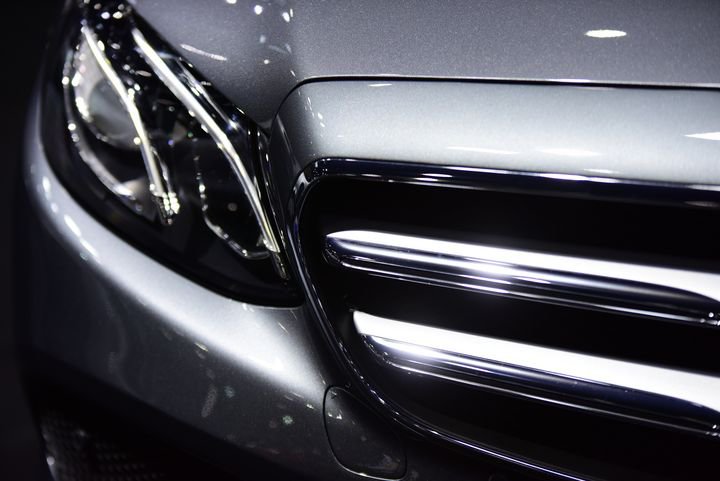Substrates
For decorative plating on plastics, ABS (Acrylonitrile Butadiene Styrene) copolymer has been widely used. PC/ABS (Polycarbonate/Acrylonitrile Butadiene Styrene) polymer alloy is also used if high heat resistance is required.
Plastic is more lightweight compared to metals, also we can easily mold plastic into various shapes. Decorative plating process for plastic is the method to form metallic films on ABS, PC/ABS and other various plastic.
Car manufacturers have strengthened the effort for car weight reduction to improve fuel efficiency. To replace metal objects by plastics, plastic metallization widely prevails in automotive interior and exterior parts. Not only for the vehicles, but also for consumer products, metallized plastic is used in the designs for motorcycle, bicycle, bathroom, kitchen and various interior parts. You will discover plated parts related to OKUNO in your daily life.

For decorative plating on plastics, ABS (Acrylonitrile Butadiene Styrene) copolymer has been widely used. PC/ABS (Polycarbonate/Acrylonitrile Butadiene Styrene) polymer alloy is also used if high heat resistance is required.
Remove oil, fat and dirt from plastic and clean the surface.
After degreasing, surface conditioning is often conduced to prevent air pocket occurrence in plating steps.
We have various air-pocket preventing agents (Product name: TOP PLACON series).

Dip plastic into highly concentrated chromic acid-sulfuric acid based etchant.
Selectively dissolve butadiene to minutely roughen plastic surface.

Reduce chromium ions from hexavalent to trivalent, and remove the ions from plastic surface.

Dip plastic into hydrochloric acid bath.
After pre-dipping, proceed to the next process without water rinse.
Avoid water drag-in from pre-treatment into catalyzing steps.

Make palladium-tin colloids adsorbed on plastic surface.
The colloids work as a catalyst in an electroless plating step.
We have a stabilizer for catalyzing baths (Product name: CATALYST STABILIZER).
The product can increase bath stability of catalyzing baths by replenishing tin (II) chloride.

Dissolve and remove excessive tin from palladium-tin colloids, and accelerating palladium.

Conduct electroless nickel plating to make a primary conductive film before electroplating.
After this step, water rinse and copper electroplating is conducted.
In some cases, nickel strike electroplating is often conducted between electroless nickel plating and copper electroplating to ensure high conductivity.
We have a copper substitution agent (Product name: ANC ACTI) for the purpose.

To obtain metallic and shiny appearances, make etched plastic surface flat and smooth uniformly.
Plastic parts have weld lines where two flow fronts meet during molding process.
The additives for acid copper plating baths need to show high covering performance that can bury weld lines in order to avoid plating defects caused from molding process.

Deposit sulfur-free nickel plating films.
Semi-bright nickel films don’t contain sulfur; on the other hand, bright nickel films contain sulfur.
Thus, semi-bright nickel films indicate more noble electro-potential than that of bright nickel films.
By the difference in electro-potential, bright nickel plating films preferentially will corrode, and semi-bright nickel films will be protected from corrosion.
The additives for semi-bright nickel plating baths need to show high levelling performance and satisfy high-class mechanical properties.

If very strong corrosion resistance is required, tri-nickel plating is conducted.
The sulfur content in tri-nickel plating is the richest among three kinds of the nickel plating films, and the films indicates the least electro-potential among three kinds of the nickel plating films.
Thus, tri-nickel plating films preferentially will be damaged by sacrificial corrosion, and strongly protect semi-bright nickel films.

For decorative and beautiful appearances, bright nickel plating is conducted.
The additives for bright nickel plating baths need to achieve bright and shiny appearances, and not to affect the covering performance of chromium plating.
For satin and matte finish, we have special additives (Product name: TOP DuNC ST series).

For extremely high corrosion-resistance, use a nickel plating bath containing dispersed non-conductive fine particles.
When chromium plating is applied on this film, many micro-pores are formed in the films.
The micro-pores work to spread corrosion current over the surface, and we can achieve remarkably high corrosion resistance for a long term.
The additives need to realize uniform co-deposition regardless of the shapes and the areas of plated parts.

Chromium plating can give shiny, beautifully metallic appearances on plated parts.
Chromium plating requires excellent corrosion resistance and covering performance.
For silver-white color, we have TOP DuNC CR series (fluoride-based hexavalent chromium plating bath).
For grayish-white, gray and smoky colors, we have TOP FINECHROME series and TOP FARBE series (trivalent chromium plating bath).
We can provide you with many products from pre-treatment to various color variations to enable a wide range of color choices.
OKUNO's TECHNOLOGY: OKUNO’s strength for plating on plastic
